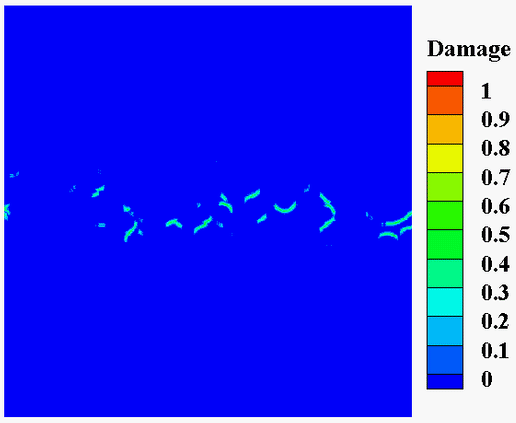Microstructure Informed Multiscale Models and Simulation
Models and simulations are crucial for understanding the behavior of materials in extreme environments and the fundamental mechanisms that govern their behavior. The experimental nano/micro-scale information coupled with multiscale modeling and simulation can significantly improve the fidelity and accuracy of structure-property relations. Improved structure-dependent behavior can, in turn, cooperate and interplay with microstructure informatics to improve overall confidence levels for estimates of structure-property relations, thereby reducing the burden on costly and time-consuming experimental protocols. Here, we focus on developing physics-based, microstructure-aware constitutive and damage model coupling processes at different scales to transform information at one scale and transfer it to another scale. The experimental tool developed in the lab will guide the modeling effort and support the design of high-performance materials through experimental validation of microscale behavior.
The long-term goals of this proposed project are:
-
Design a coupled constitutive/failure/damage model-based simulation framework
-
Develop coupled Multiphysics Constitutive Models
-
Generate Structure-Property-Performance Relations for Composites/Alloys




Publications
-
Olokun, A. M., Prakash, C., Gunduz, I. E., and Tomar, V., 2020, The Role of Microstructure in the Impact Induced Temperature Rise in Hydroxyl Terminated Polybutadiene (HTPB)-Cyclotetramethylene-Tetranitramine (HMX) Energetic Materials Using the Cohesive Finite Element Method, Journal of Applied Physics, Vol. 128 (6), 065901. (link)
-
Prakash, C., Gunduz, I. E., and Tomar, V., 2019, The Effect of Interface Shock Viscosity on The High Strain Rate Induced Temperature Rise in an Energetic Material Analyzed using the Cohesive Finite Element Method, Modelling and Simulation in Materials Science and Engineering, Vol 27 (6), 065008. (link)
-
Prakash, C., Lee, H., Alucozai, M., and Tomar, V., 2016, An analysis of the influence of grain boundary strength on microstructure dependent fracture in polycrystalline tungsten, International Journal of Fracture, 2016, Volume 199 (1), pages 1-20. (link)
-
Prakash, C., Gunduz, I. E., and Tomar, V., 2018, Uncertainty Quantification in Nano-scale Impact in Energetic Materials, Model Validation and Uncertainty Quantification, Volume 3, pages 257-263.(link)
-
Prakash, C., Gunduz, I. E., and Tomar, V., 2018, Interface Shock viscosity in Energetic material using Cohesive Finite Element Method, AIAA/ASCE/AHS/ASC Structures, Structural Dynamics, and Materials Conference, AIAA SciTech Forum, (AIAA 2018-1158).(link)
